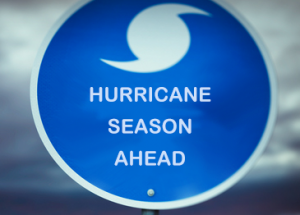 Texas electric rates.” width=”300″ height=”215″ />
Texas electric rates.” width=”300″ height=”215″ />
In Texas, June 1 is the beginning of hurricane season. With Texas so often pounded by these storms, residents want to know what to expect this summer. According to several weather bureaus, Summer 2021 looks like it will be an “above-normal” hurricane season. Chief among them, the National Oceanic and Atmospheric Administration (NOAA) predicted “an above-normal season is most likely (60% chance), with the possibility of it being extremely (aka hyper- ) active.”
| 2021 NOAA Prediction |
Seasonal Average 1981-2010 |
NEW Seasonal Average 1991-2020 |
|
| Number of named storms (winds 39 mph+) |
13-20 | 12 | 14.4 |
| Storms becoming hurricanes (winds 74 mph+) |
6-10 | 6 | 7.2 |
| Major hurricanes (Cat. 3, 4 or 5, winds 111 mph+) |
3-5 | 3 | 3.2 |
Will Texas Face Another ‘Hyper-cane’ Season?
What’s unsettling is that this forecast seems terribly similar to last year’s Texas hurricane forecast. That season eventually produced a record 30 tropical storms. That’s largely due to the fact that similar circumstance are work again. As of May 13, the El Niño Southern Oscillation (ENSO) has been in a neutral phase. That is, not warm enough to be an El Niño and not cold enough to be La Niña. To be clear, El Niño or La Niña don’t actually prevent or cause hurricanes. Rather, both are phenomena in the Pacific Ocean that shifts atmospheric circulation (known as the Walker Circulation). El Niños make Atlantic tropical storms less-likely to occur while La Niñas make them more-likely.
During ENSO Neutral phases ( or “La Nada”), other global weather patterns can influence Atlantic storm development. Lately, one crucial factor has been Atlantic sea surface temperatures (SSTs).
La Nada is a Big Hurricane Factor
Since 2016, water temperatures in the Atlantic Basin have exerted marked influence during La Nada. The past five years have seen active storm seasons due to the influence of ENSO Neutral conditions in the Pacific:
2016 — ENSO Neutral conditions emerges late May. Atlantic SSTs remain cool until August. Only then the hurricane season grows very active. Remnants of Hurricane Newton bring heavy rains to western Texas.
2017 — ENSO Neutral conditions emerge in May. Warm Atlantic waters power an extremely active season. Hurricane Harvey hits Texas in August.
2018 – Even though ENSO Neutral conditions lasted from April to September, a bitterly cold winter kept Atlantic SSTs cold. And excessively dry wind coming off the Sahara helped quash storm formation until August 31. September through October sees 11 storms, 6 becoming hurricanes.
2019 — ENSO Neutral conditions emerge during first week of August. The hurricane season roars back, becoming the fourth consecutive above-average season. A total of 17 storms from August to November, 5 become hurricanes. Tropical Storm Imelda lands near Freeport, TX in September and brings heavy rain.
2020 — ENSO Neutral conditions at year’s start. Atlantic SSTs at record levels in March. Record breaking hurricane season develops 30 named storms, 14 become hurricanes. In July, Hurricane Hanna lands near Port Mansifeld, TX, $1.1 billion in damage. Hurricane Laura knocks out power in Orange County in August. Tropical Storm Beta flooded southern parts of Houston in September.
An Above-Normal Hurricane Season
This year began with a La Niña. The Arctic blast made this past winter was memorably chilly. However, the big chill was a separate phenomena from the typical La Niña weather pattern. And in spite of all the cold winter in North America, Atlantic SSTs stayed average and have since warmed. By mid-May, the La Niña faded to La Nada.
So, once again, the ideal conditions of calm winds and warm water seem to be in place throughout the Atlantic basin. Low-pressure waves moving west the coast of Africa will have better chances to build into tropical depressions. And these potentially could spin up into bigger storm systems.
Hurricane Season and Your Summer Electricity Rates
The first thing any Texas electricity customer should do to inspect your AC system. Or get it done by a professional. ERCOT is anticipating record-breaking electric demand this summer due to expected hot and dry conditions and the U.S. economy recovering. While that sounds dire, there’s some good news. ERCOT announced that it will have a 15.7% reserve margin this summer. That’s around 86,862 MW to cover an expected peak demand of 77,144 MW. To compare, last year’s reserve was about 12.6%.
That said, summer electricity rates still face a lot of uncertainty. Natural gas generates a significant chunk of Texas power. Even though renewables are expected to produce more this summer, natural gas production is being held back. The EIA’s STEO estimates that average summer residential electricity prices are expected to rise by 2.92%. That price climb could get worse as natural gas power burn is increased to meet higher electricity consumption. To that end, ERCOT has considered several scenarios in its summer plan where generation resources might strain to cover anticipated demand. Of course, energy rates could surge if a storm shuts down natural gas production in the Gulf of Mexico.
So, if you’re currently in a monthly variable rate or prepaid arrangement, seriously consider switching to a fixed rate plan as soon as possible to avoid paying a screaming-high electric bill this summer.
When Is The Next Hurricane Going To Hit Texas?
No one knows. Fortunately, high pressure systems dominating the Atlantic Basin this Memorial Weekend will keep things quiet. However, the weather will change. So, while no one knows when a hurricane WILL hit Texas, the waters in the Gulf are primed:
- SSTs in the Caribbean and Gulf of Mexico are currently poking around 82°F. That’s the temperature that spawns tropical storms and sustains hurricanes.
- NOAA predicts above-normal summer temperatures in Texas and the rest of the U.S. southern tier of states. That promises plenty of heat in the Gulf to spin up storms well into the fall.
Get Hurricane Ready Now!
Texas has suffered a number of direct hits from hurricanes in recent years. Because we want everyone to stay safe, we urge Texans to prepare to weather the worst now. Remember that it only takes one storm to create a disaster. Don’t wait for the wind and water to knock on your door.
- Make a plan so your family knows for what to do when a tropical storm heads for Texas. Also, for the time being Covid-19 remains a public health threat. So if you’re not fully vaccinated, be sure to follow masking guidelines.
- Create a Hurricane Safety Checklist to help your family track what supplies you’ll need if you choose to shelter in place.
- Build your hurricane kit. Gather your supplies for everyone in your family. Don’t forget your pets!
- Sheltering in place is an option up to a point because hurricane winds can be incredibly dangerous:
– Coastal areas are seeing higher and more devastating storm surges.
– When powerful hurricanes move far inland flooding.
– High winds can still cause enormous damage especially to trees and power lines. Your Texas electricity service could go out for hours or even days.
- Gather essential stuff for your grab ‘n’ go bag. Everyone (yes, pets, too) should have their own grab ‘n’ go bag if you have to leave your home. Also take time to line up where you’ll go during an evacuation. Lastly, review and understand your Texas evacuation routes before you hit the road.
